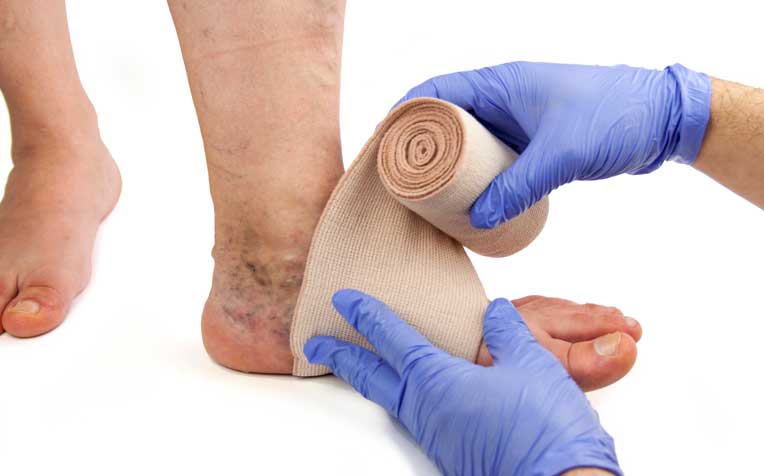
Compression bandages or stockings can help to reduce the pressure and swelling in the veins.
Symptoms and risk factors for varicose veins
Varicose veins typically affect the legs and thighs. These enlarged veins may cause mild swelling of the ankles, especially after long hours of standing or walking. Other symptoms can include the following:
- throbbing in the legs,
- aches and pain,
- darkening of the skin,
- rashes and
- ulcers on the ankles.
Not all patients with varicose veins suffer from these symptoms. Some have no medical complaints even after decades of having them.
Contributing factors for varicose veins
Genes
If your family members have varicose veins, you are more likely to develop them. Standing for long periods can worsen the condition.
Age
Varicose veins usually become more obvious during middle age.
Pregnancy
Women prone to the condition may develop varicose veins during pregnancy because of hormonal changes and increased pressure in the veins as the uterus grows.
Weight gain during pregnancy also puts more pressure on leg veins. After delivery, varicose veins may improve or subside, but in some women, the symptoms may persist.
Gender
Varicose veins are more common in women due to hormonal changes, especially during puberty, pregnancy and menopause. Birth control pills are also believed to increase a woman’s risk of developing varicose veins.
Common misconceptions about what causes varicose veins
High heels cause varicose veins.
While high heels can cause a number of foot-related problems, they do not lead to varicose veins. The condition seems to run in families, meaning you are either prone to varicose veins or not, said Associate Professor Tan Seck Guan, Senior Consultant, Department of Vascular Surgery, Singapore General Hospital (SGH), a member of the SingHealth group.
If the walls of your veins are weak, you are more likely to develop varicose veins whatever your lifestyle habits.
Weight gain causes varicose veins.
Obesity is associated with the presence of varicose veins and worsening venous disease, but losing weight does not necessarily “cure” varicose veins.
Certain exercises and stockings can prevent varicose veins.
There is no non-surgical method to prevent varicose veins or shrink them once they have formed, although a recent study suggests that wearing regular stockings may help slow the progression of venous disease.
Ref. T12
Contributed by














 Get it on Google Play
Get it on Google Play